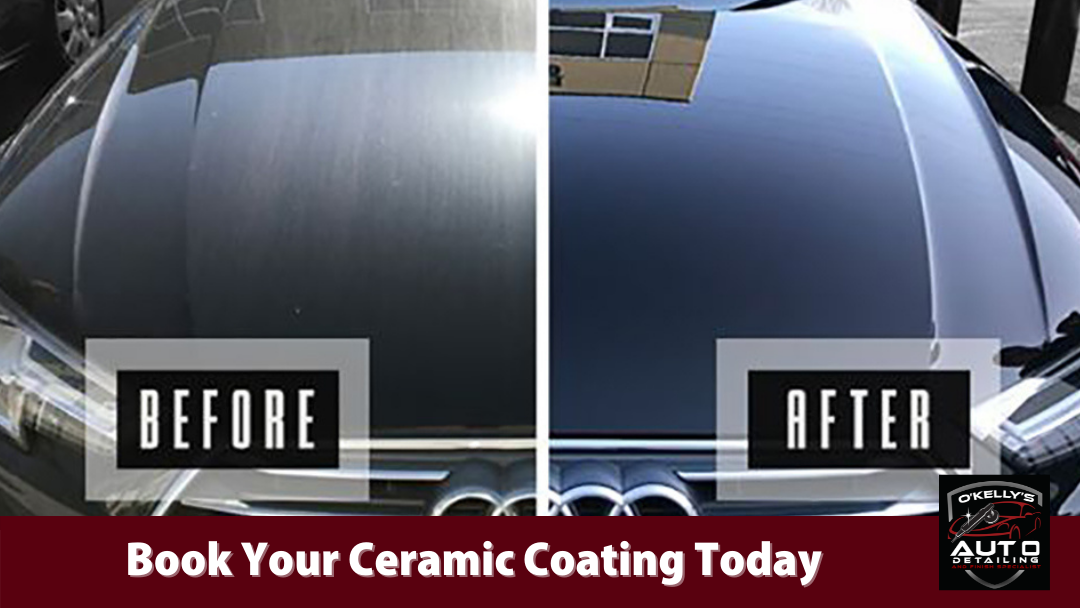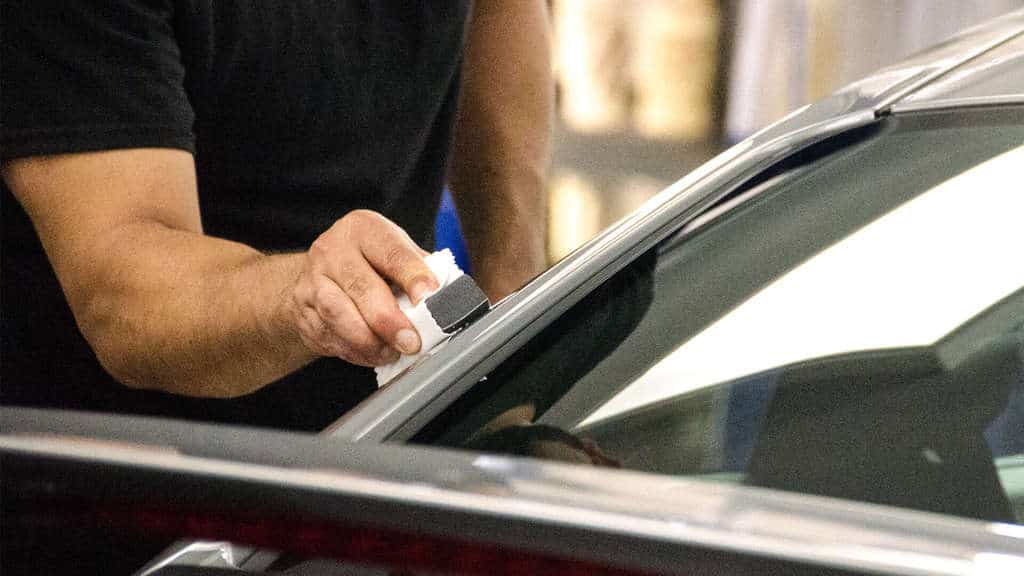How Ceramic Coating Enhances Your Vehicle's Protection and Appearance
How Ceramic Coating Enhances Your Vehicle's Protection and Appearance
Blog Article
Ceramic Covering vs. Standard Wax: Which Supplies Much Better Long-Term Security?
The discussion in between ceramic finishings and typical wax for lorry protection has amassed substantial attention among automotive lovers and professionals alike. While both serve the purpose of guarding paint, their distinctions in longevity, application, and lasting upkeep expenses may affect a consumer's option. Ceramic coverings boast premium durability and resistance to ecological variables, yet the complexity of their application increases concerns regarding ease of access and practicality. As we discover these contrasting alternatives, it ends up being necessary to take into consideration not only the instant advantages yet also the ramifications for automobile care in time.
Overview of Ceramic Finishing
Ceramic covering has actually acquired significant appeal among auto lovers and detailers alike because of its advanced safety qualities. This ingenious technology is made to produce a resilient, hydrophobic shield over a car's paint surface area, substantially boosting its resistance to environmental contaminants such as dust, UV rays, and chemical stains. Unlike conventional wax, which provides a short-lived layer of defense, ceramic layers bond at a molecular level with the paint, using lasting longevity-- typically expanding beyond 2 years with correct maintenance.
The application process includes meticulous preparation of the automobile's surface area, consisting of cleaning and polishing to make sure optimum attachment. When used, the layer cures to form a durable layer that not just includes deepness and gloss to the paint but also simplifies upkeep. With its hydrophobic residential properties, ceramic finish enables water and dirt to move off even more conveniently, decreasing the frequency of washes and minimizing the risk of swirl marks.
Additionally, ceramic coverings are offered in different solutions, permitting customers to pick items customized to their specific needs and preferences. Overall, ceramic covering represents a significant advancement in paint defense modern technology, supplying premium performance compared to traditional choices.
Summary of Standard Wax
Typically considered as a staple in automotive treatment, wax offers as a prominent choice for those seeking an uncomplicated method to enhance and protect their lorry's paint - ceramic coating. Automotive wax typically comprises all-natural active ingredients, such as carnauba, or synthetic compounds, made to develop a safety layer externally of the paint. This layer not just enhances the vehicle's gloss and radiate but additionally supplies a barrier against ecological impurities
The application of wax is usually straightforward, making it available for both professionals and DIY enthusiasts. When applied, wax requires a treating period, after which it solidifies to develop a protective shell.
Nonetheless, while wax is effective for improving the aesthetic charm of a vehicle, it is necessary to keep in mind that the security it supplies may require a lot more frequent reapplication compared to alternate items, such as ceramic coatings. On the whole, traditional wax stays a preferred option for those focusing on ease of use and prompt aesthetic improvement.
Resilience and Durability Contrast
While both ceramic coverings and standard wax offer protective advantages for vehicle paint, their sturdiness and longevity differ substantially. Standard wax, typically made from natural carnauba or synthetic polymers, usually supplies a protective layer that lasts approximately three to six months. This reasonably short life expectancy requires regular reapplication to maintain ideal security.
In comparison, ceramic coverings are crafted from advanced nanotechnology, creating a covalent bond with the paint surface area. This leads to a durable, hydrophobic layer that can sustain for 2 to 5 years, relying on the item and ecological conditions. The exceptional toughness of ceramic coatings is credited to their chemical framework, which supplies enhanced resistance to scratches, UV rays, and oxidation.

Defense Versus Environmental Variables
Securing a lorry's paint from ecological aspects is essential for keeping its appearance and worth over time. Automobiles are continuously revealed to a variety of components, including UV rays, bird droppings, tree sap, acid rain, over at this website and roadway gunk, all of which can jeopardize the integrity of the paintwork.
Ceramic finishings provide a durable protection against these ecological aggressors. Unlike typical wax, which can degrade rapidly under UV direct exposure, ceramic finishings create a resilient, hydrophobic layer that stands up to the dangerous impacts of sunshine and toxic wastes. This advanced modern technology creates a chemical bond with the car's surface area, supplying superior security that lasts for several years, even in severe conditions.
In contrast, ceramic coverings keep their safety qualities much longer, dramatically lowering the threat of paint damages and ensuring that the lorry maintains its aesthetic charm. As an outcome, ceramic finishes are progressively recognized as the remarkable option for long-lasting protection versus environmental elements.
Application and Maintenance Differences
The approaches of application and subsequent maintenance for ceramic coverings and typical wax vary substantially, influencing the general customer experience and efficiency of each item. Ceramic layers call for a more complex application procedure, usually involving surface area preparation that includes cleaning, decontaminating, and polishing the vehicle. When the surface area prepares, the ceramic finish is applied in a regulated environment, commonly requiring expert know-how to ensure appropriate treating and bonding to the paint.

While both products enhance car look, the longer-lasting security supplied by ceramic coverings may validate their preliminary investment, in spite of the even more requiring application procedure. Alternatively, traditional wax remains a popular choice for those seeking an easier, albeit short-term, service.

Verdict
Finally, ceramic finishes show substantial benefits over typical wax in terms of sturdiness and ecological security. With a life expectancy prolonging two to five years and superior resistance to UV rays, dirt, and chemical discolorations, ceramic coatings use an extra reliable remedy for long-lasting car maintenance. The application procedure may require specialist proficiency, the resulting cost financial savings and lowered regularity of reapplication emphasize the worth of ceramic finishings for those seeking optimum car protection.
The discussion between ceramic coverings and traditional wax for lorry defense has amassed considerable attention amongst auto lovers and professionals alike. Unlike typical wax, which supplies a temporary layer of defense, ceramic finishes bond at a molecular level with the paint, supplying resilient durability-- typically expanding beyond two years with appropriate upkeep.
While both ceramic coatings and conventional wax deal safety benefits for automotive paint, their sturdiness and durability vary substantially. For vehicle enthusiasts seeking lasting security, ceramic finishes provide an engaging benefit over conventional wax items.
In verdict, ceramic coverings show substantial advantages over conventional wax in terms of sturdiness and environmental protection.
Report this page